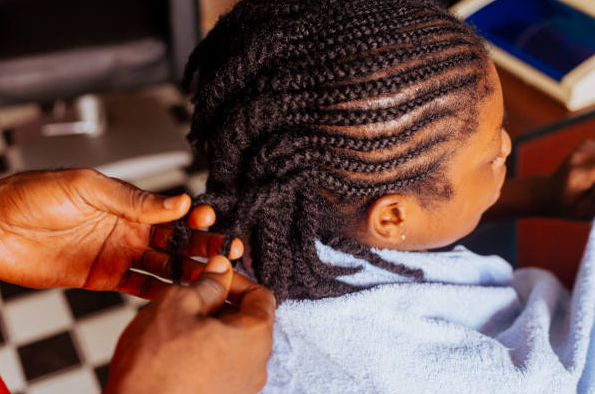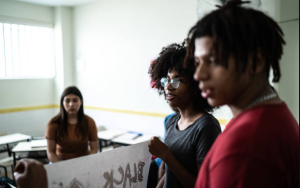
For generations, schools across the United States have grappled with the contentious issue of enforcing dress codes, particularly when it comes to hairstyles.
However, nowhere has this issue ignited more controversy than in Texas, where a legal showdown is underway to determine the fate of Darryl George, an 18-year-old Black student who has been barred from his classroom for refusing to cut his hair.
Unbraiding Discrimination
The crux of the matter lies in the clash between school administrators’ pursuit of uniformity and discipline and the deeply rooted cultural and religious identities of students like George. While dress codes are often touted as means of fostering orderliness, advocates argue that they disproportionately target students of color and disrupt the learning environment.
The Texas trial, unfolding this week, epitomizes the broader struggle against discriminatory grooming policies. George’s case underscores a pattern where Black students, in particular, find themselves at odds with school regulations that fail to accommodate diverse cultural practices and identities.
The controversy surrounding hair regulations in schools is not a new phenomenon. Historically, such rules reflect systematic attempts to impose Eurocentric beauty standards and norms, dating back to the era of slavery.
From South Carolina’s “Negro Act” of the 1700s to more recent instances of grooming policies, there’s a troubling legacy of controlling the appearance of Black individuals. For many African Americans, hairstyles carry profound cultural significance, serving as symbols of identity, heritage, and resistance.
Read more: BAFTA to Honor Matthew Perry After Fans Voice Disappointment
CROWN Act vs. Hair Discrimination in Texas Schools

From braids to locs, these styles are deeply intertwined with African traditions and have evolved into potent expressions of self-affirmation and pride. Yet, despite the rich cultural tapestry that hairstyles represent, students like George continue to face discrimination and punitive measures for simply embracing their natural hair.
The enforcement of strict dress codes not only perpetuates harmful stereotypes but also inflicts tangible harm, both psychologically and economically, on Black individuals and other marginalized groups.
The pushback against discriminatory dress codes has gained momentum in recent years, with students and advocacy groups challenging such policies on legal and moral grounds. Cases like that of Deanna and Mya Cook in Massachusetts highlight the resilience of individuals in confronting institutionalized discrimination and demanding justice.
In Texas, where the prevalence of strict dress codes is particularly pronounced, the trial involving George carries significant implications for the broader fight against hair-based discrimination.
By invoking the CROWN Act, which prohibits race-based hair discrimination, George’s case underscores the urgency of enacting policies that uphold diversity and inclusion in educational settings.
Ultimately, the battle over school dress codes in Texas transcends mere regulations; it’s about affirming the dignity and rights of every student to express their cultural and religious identities without fear of reprisal or discrimination. As the trial unfolds, it serves as a poignant reminder of the ongoing struggle for equity and justice within our educational institutions.
Read more: Beyond Monogamy: Why Polyamory is More than Just Open Relationships

